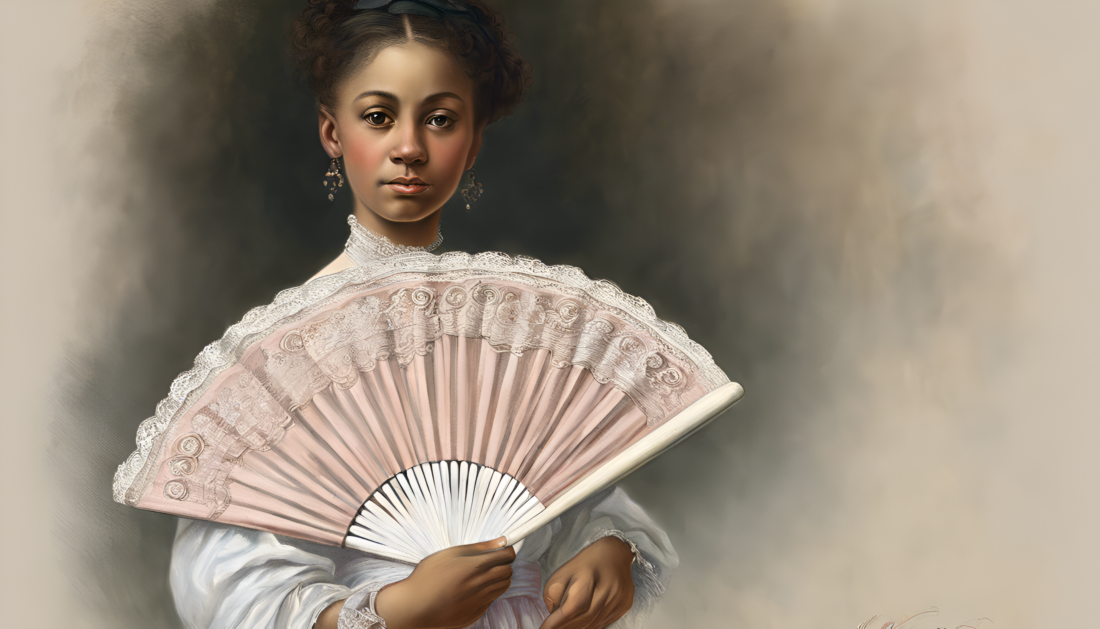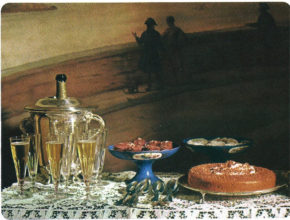“What grace the fan lends to a woman who knows how to use it! It undulates, it flutters, it expands, it closes, it rises, it falls at will. It is the most powerful weapon in beauty’s arsenal.” – Madame de Stael
Man made fans date from around 3000 BC. But really, what that means is that’s when we have evidence of their use.
“From the bas-reliefs on the ruins of Koyundjik we have proof that the Assyrians, some 3,000 years ago, understood the art of fan-making; on a bas-relief at Nimrod a slave is waving a fan to cool the liquid in a Vase.”
Fans by Dudley Dunn, (1901)
At the same time, the Eygptians used fans and even created the position of fan-bearer. Later, the ancient Chinese, Greeks, Etruscans, Arabic Tribes and Romans all used fans. There are jewel laden fans dating back to antiquity in the South and Central Americas. Examples and imagery exist for the Inca, Aztec and Maya.
From murals and mosaics, it’s gathered that the original fan designs were likely modeled after palm fronds, large leaves or animal tales. Often these were comprised of feathers, leaves or hair attached to a stick. But as with all things human, they became decorated and elaborate quickly, as murals depicting Ancient Egyptian fans show some with decorated gold sticks. Golden sticks likely imply that these were show fans used in rituals.
In China fans became increasingly specialized with different fans for different jobs. While the ” …earliest record of the folded or “pleated” fan comes from Japan, where tradition says it was designed about 670 A.D. by an artist to lived int eh reign of the Emperor Jen-ji, on the principle of the construction of a bat’s wing.” (Some Notes on Fan Collecting* by Baroness von Keudell)
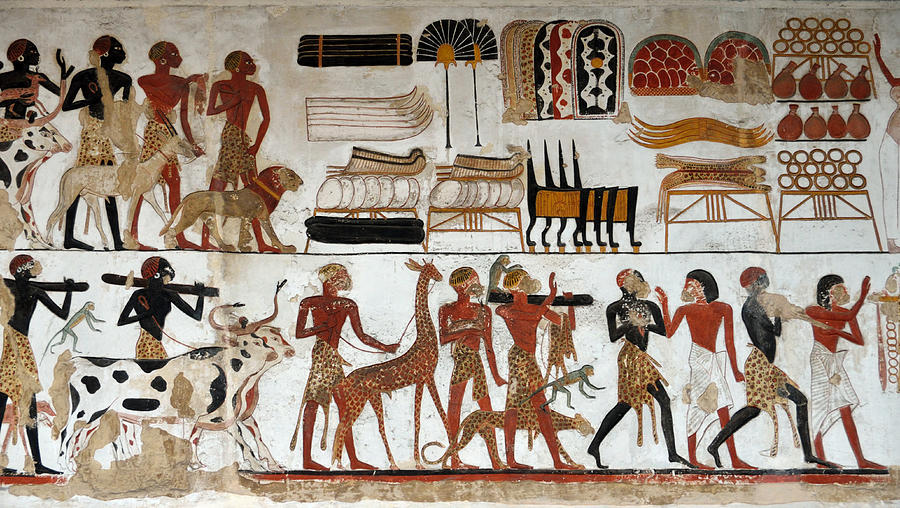
As spices travelled from Asia to Europe; art, science and goods all made their way as well. Europeans seem to have adopted these man-made fans immediately. In the Medieval ages, there were fans made of cloth, chicken skin or vellum in addition to imported varieties. These early fans were extremely expensive and so reserved for Royalty, the church and the nobility. Like many luxury goods, fans were status symbols. Sticks and guards were made from materials such as ivory, mother of pearl and tortoiseshell, often carved and pierced and ornamented with silver, gold and precious stones, the leaves were well painted by craftsmen who gradually amalgamated into guilds such as The Worshipful Company of Fan Makers, (how’s that for an amazing name).

Stick type hand fans entered general use in the 1300s: “…it was in general use in France in the fourteenth century, and the earliest record of it in England is 1307” (Fans by Dudley Dunn). While the folded fan travelled from Japan to China by 960 A.D., it didn’t take hold in Europe until the late 1500’s. Flag fans were especially popular in Italy and many examples still survive.
By the later sixteenth century, folding fans began to be imported from the east and grew in popularity until, by the 1700’s, they had completely superseded fixed fans in popularity. Fixed fans remained popular with the lower classes, as they were cheap to make and they can be seen well into the twentieth century, morphing into paper advertising fans.
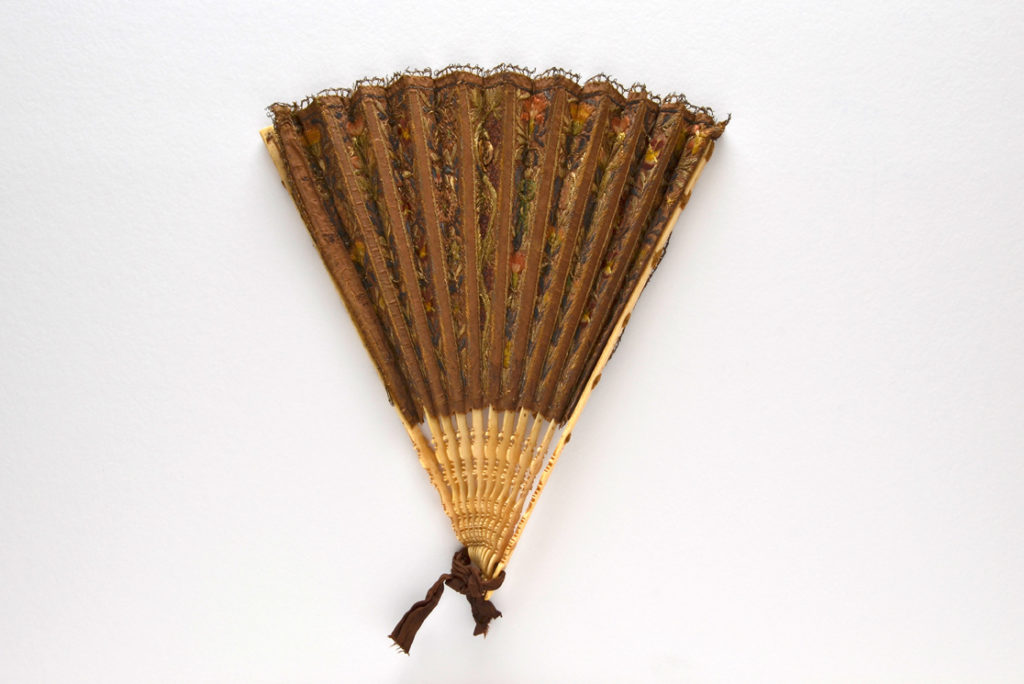
The eighteenth century saw the development of the printed fan which made folding fans available to all classes.
Some of the most lavish fans date from the second half of the nineteenth century. The artists who painted these fans were often fashionable painters who signed their work. Paris became the center of fan manufacture, a continuation of Paris being the epicenter of fashion. Victorian fans were gorgeous, usually highly decorated and by the end of the century, huge. Even cheap fans made for the lower classes were colorful and attractive.
By the Edwardian period, fans became less intricate though remained large so as to balance the fashion for large hats and accessories. But as the teens approached, fans began a steady decline in size.
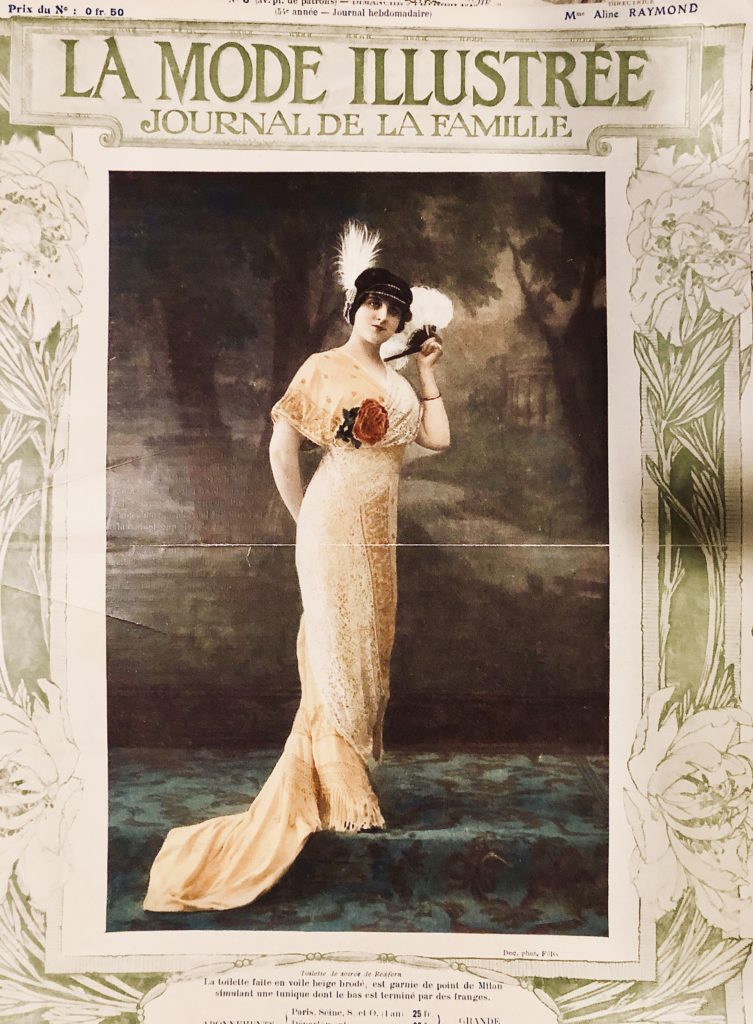
During the late teens, fans became smaller keeping in scale with the pared down fashions of the day. This trend continued into the twenties, with the exception of the huge ostrich feather fans that went so deliciously with a flappers’ streamlined evening gown.
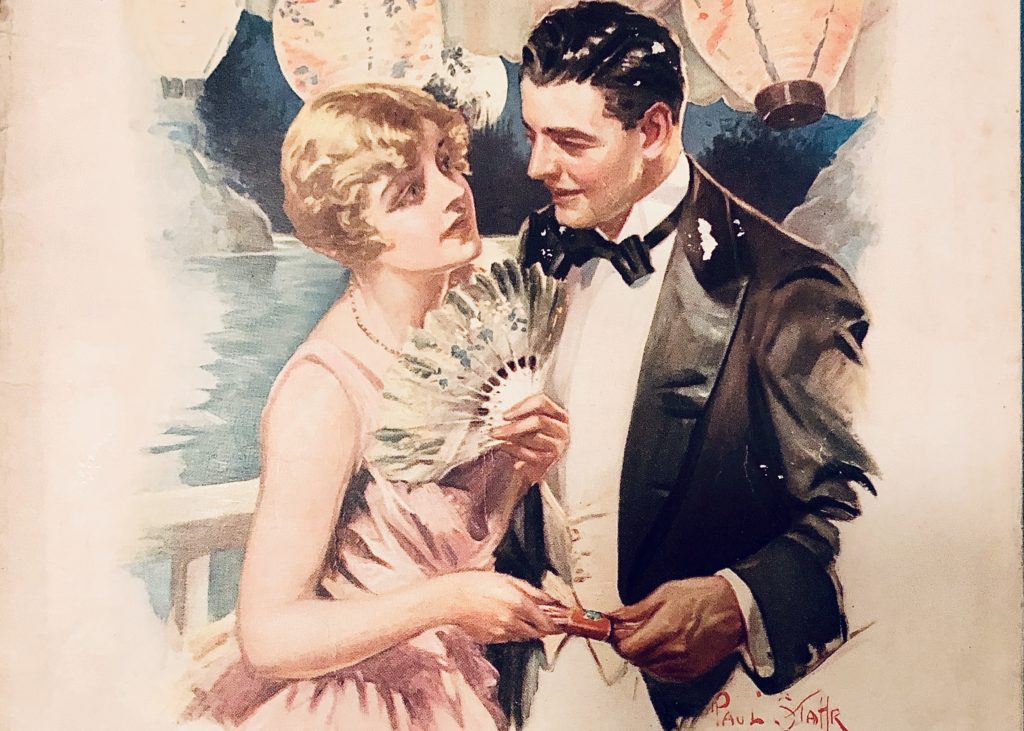
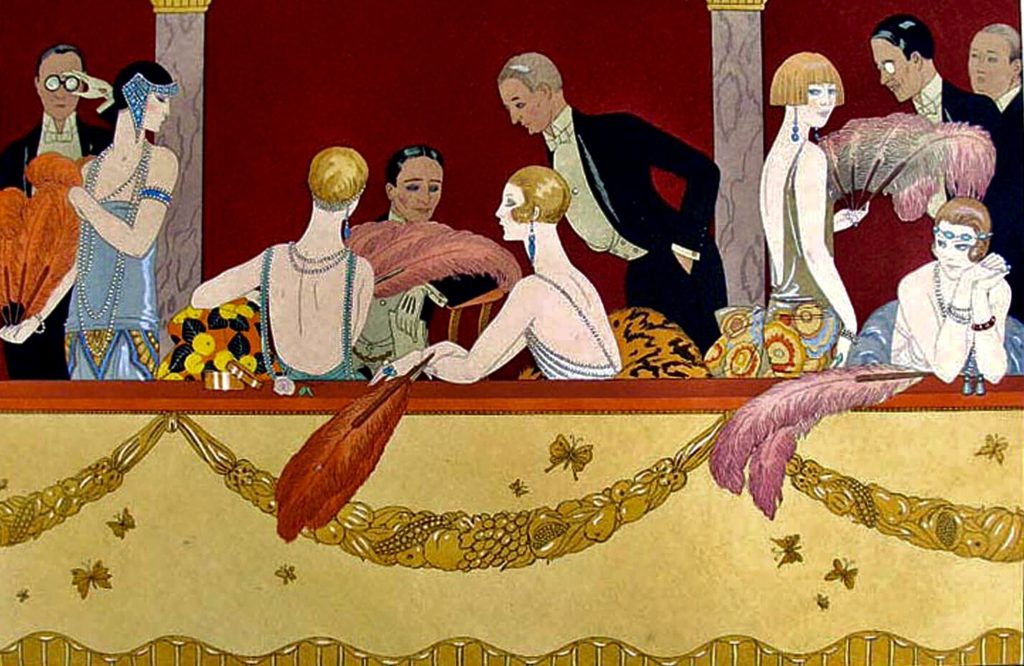
In the 1930’s fans became closer in size to the fans we see today. Modern dress seemed at odds with the fan. Access to public transit and automobiles meant that women travelled farther than they used to on a regular basis, leading them to pair down how many accessories they carried. The movement to women carrying their own money and the lack of stores based on keeping a list of charges then billed to a household, caused more women to carry handbags for practical use rather than aesthetic reasons. Possibly, even more importantly, the ubiquity of electricity meant that most homes and offices had oscillating fans to cool everyone down. Becoming less and less a necessity fans were not only reduced in size, but in number as well.
By the forties, fans were becoming extinct tor daily wear. Of course the introduction of air conditioning really ended the reign of the fan. While there were forms of air conditioning introduced early in the twentieth century, it was in the late forties that it became affordable for average people to install in their homes. This reduced the hand fans’ main use to church services and outdoor events. By the sixties when every new home was built with air conditioning, fans were rarely seen at all.
Now I’m simplifying a huge amount, so here are the reference materials I used if you want to look further into the history of the fan:
Hand Fans An Illustrated History by Kathryn Finnegan (2015)
Fans by Dudley Dunn, from an article in The Connoisseur (1901)
*Some Notes on Fan Collecting, and the Fans belonging to Miss Moss, Fernhill, Blackwater by Baroness von Keudell in the Connoisseur (1905)
Concerning Fans by R. Kendall, from an article in The Connoisseur (1903)
Queen Marherita’s Collection of Fans by John Rusconi, from an article in The Connoisseur (1907)
The Fan Book by MacIver Percival (1921)
*
Next time I’ll cover the etiquette of the fan!
Sending you lots of love, Cheri
